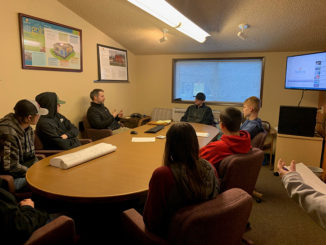 Why is Seismic Restraint Needed?
Why is Seismic Restraint Needed?
For hospitals and healthcare facilities, the damaging effects of earthquakes are of significant concern throughout North America. The Building Code mandates the use of seismic restraint for hospital and healthcare facilities even in areas with relatively low seismic activity. Earthquake damage to inadequately restrained piping and duct systems within and on buildings can be extensive even when there is no visible structural damage to the building. Piping and mechanical systems knocked off of their supporting structures due to earthquake-related building movement can threaten life, property, and the ability of a hospital to operate. The cost of properly restraining your equipment is insignificant when compared to the costs associated with repair, replacement, and system downtime as a result of seismic damage.
This article presents an overview approach to designing and applying seismic restraint systems. These systems serve to limit the movement of equipment and to keep the equipment captive during a seismic event.
A thorough analysis of seismic restraint hardware and seismically rated vibration isolators requires the consideration of four aspects of the system:
1) Attachment of the Equipment to the Restraint:
The equipment must be securely attached to the restraint system. This attachment must have sufficient strength to withstand the imposed seismic forces.
2) Restraint Design:
The strength of the seismic restraint systems are designed to withstand the imposed seismic forces.
3) Attachment of Restraint to Building Structure:
This attachment is typically via bolts, welds, or anchors. In addition, the building attachment interface must be reviewed by the structural engineer of record to ensure it meets seismic codes in the jurisdiction.
4) Equipment Fragility:
The ability of the equipment to continue to operate after being subjected to seismic force. Fragility information must be obtained from the equipment manufacturer .
In hospitals and healthcare facilities, the National Building Code, requires some pipe and duct systems to remain in operation for life-safety purposes following an earthquake. These systems are assigned a Component Importance Factor of 1.5. Life-safety systems typically include but are not limited to smoke removal and fresh air ventilation systems, infectious disease control systems, and systems that control clean rooms and surgical suites. Duct systems that are not considered life-safety but whose failure could cause failure also need to be restrained.
The most frequent occurrence of these failures has been in systems that were not restrained to the standards set forth in the building codes or the guidelines issued by SMACNA .
In applications where significant motion can occur, the restraint requirements for ductwork systems are to be adequately sized in both the lateral and axial directions. These restraints must be used with spacings short enough to prevent local failures in the duct runs between restraints. In the field, seismic restraint systems must attach and interface with numerous other systems. It is recommended that the seismic restraint be installed after the installation of the mechanical systems. The SMACNA Seismic Restraint Manual offers general guidance for field installation. It includes tables with maximum spacing and restraint component sizes for various sizes of ductwork and in various seismic zones. The SMACNA manual is easily understood and can be effectively used by installation contractors. The engineers should verify that the contractors follow this manual.
Typically ductwork systems are restrained either with cable restraints or rigid braces that run upwards at an angle. Because these links run at an angle, the application of a horizontal load generates a vertical load component on the hanger rod that supports the ductwork. This vertical component can frequently be as large as double the horizontal force. This vertical force needs to be taken into account when sizing the anchorage. For rigid pipe and duct bracing the SMACNA guidelines tabulate the sizes needed for various configurations.



